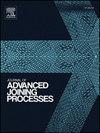Analysis of temperature history, fatigue behavior and surface hardness in rotary friction welded dissimilar polymer rods with variable rotational speeds
Abstract
Investigation of the joining technology of 3D-printed parts into a large physical model has become an important research topic. Rotary friction welding (RFW) is one of the friction welding methods. Understanding the weld interface temperature changes in the weld center zone during RFW is critical because it is related to the weld quality of the welded parts using RFW. Traditionally, the number of revolutions is constant in the RFW. However, rare investigations focus on the fatigue specimen fabricated by RFW with variable rotational speed. This study used RFW with varying rotational speeds to fabricate fatigue specimens. The ANSYS software was used to predict the temperature history of rotary frictionally welded dissimilar polymer rods fabricated by a computer numerical control (CNC) turning machine with variable rotational speed. The RFW experiment of ABS/PC dissimilar polymer rods was conducted to investigate the temperature history and compared with the simulation results. It was found that the temperature history profiles were in good agreement with the experimental and simulation results. Compared with the weld interface heating rate obtained from the experimental results, the simulation results has average discrepancy rate about 4.48 %. Compared with the maximum temperature of the weld interface obtained from the experimental results, the simulation results has average discrepancy rate about 3.16 %. The fatigue life can be increased by approximately 1.4 times. Finally, a database of rotary frictionally welded dissimilar polymer rods fabricated by a CNC turning machine with variable rotational speed was proposed. The average Shore A surface hardness at the weld interface was enhanced by approximately 18 % compared to the base ABS material.

 求助内容:
求助内容: 应助结果提醒方式:
应助结果提醒方式:


